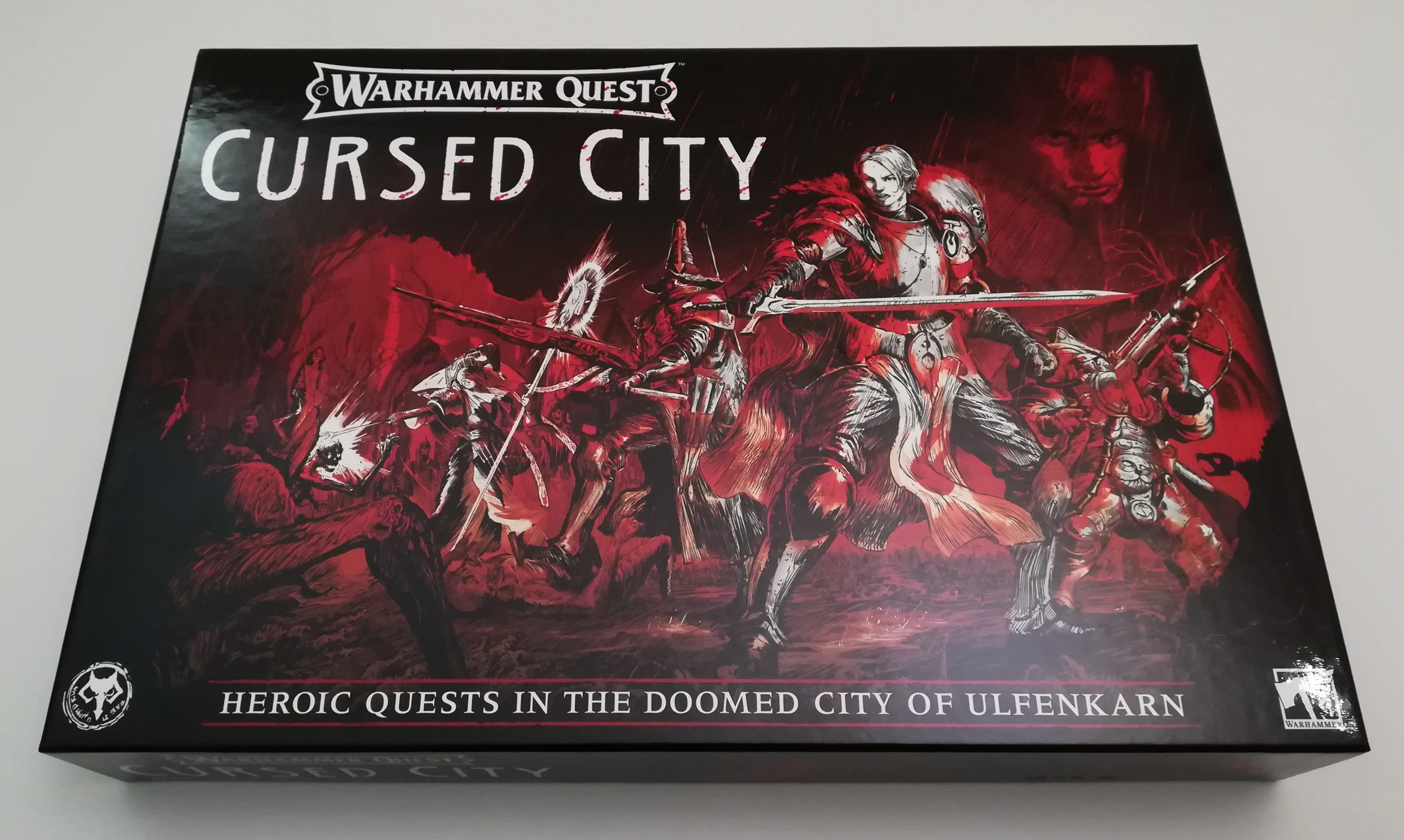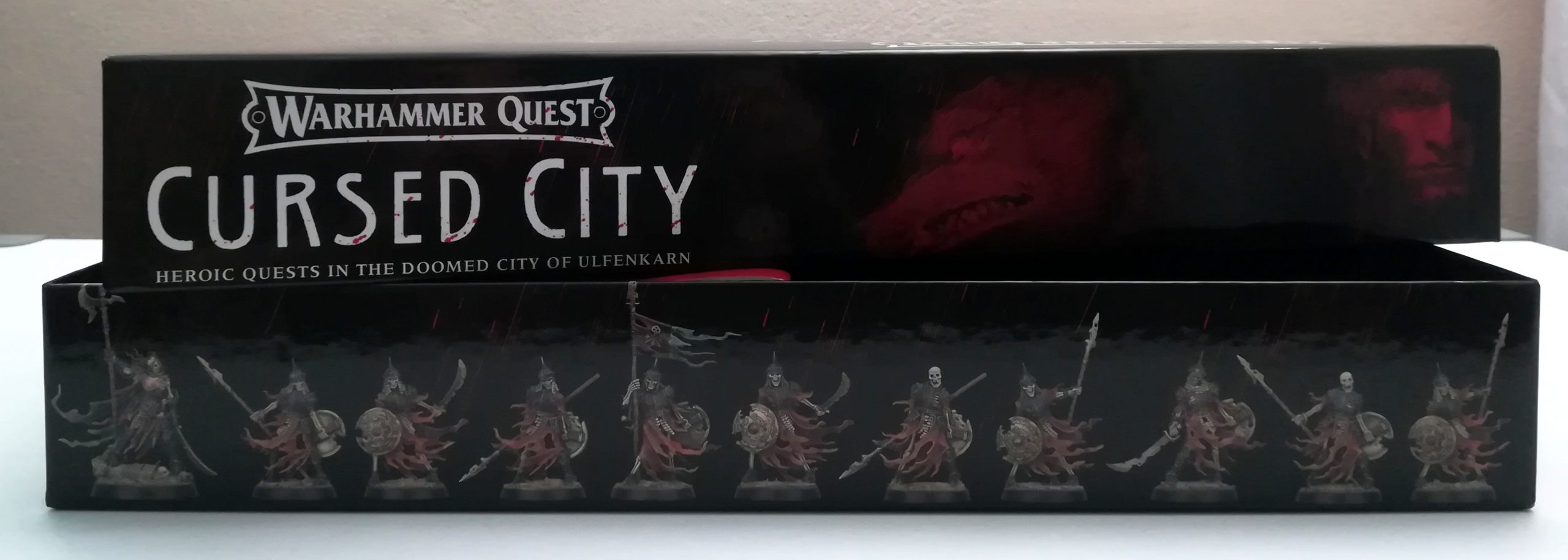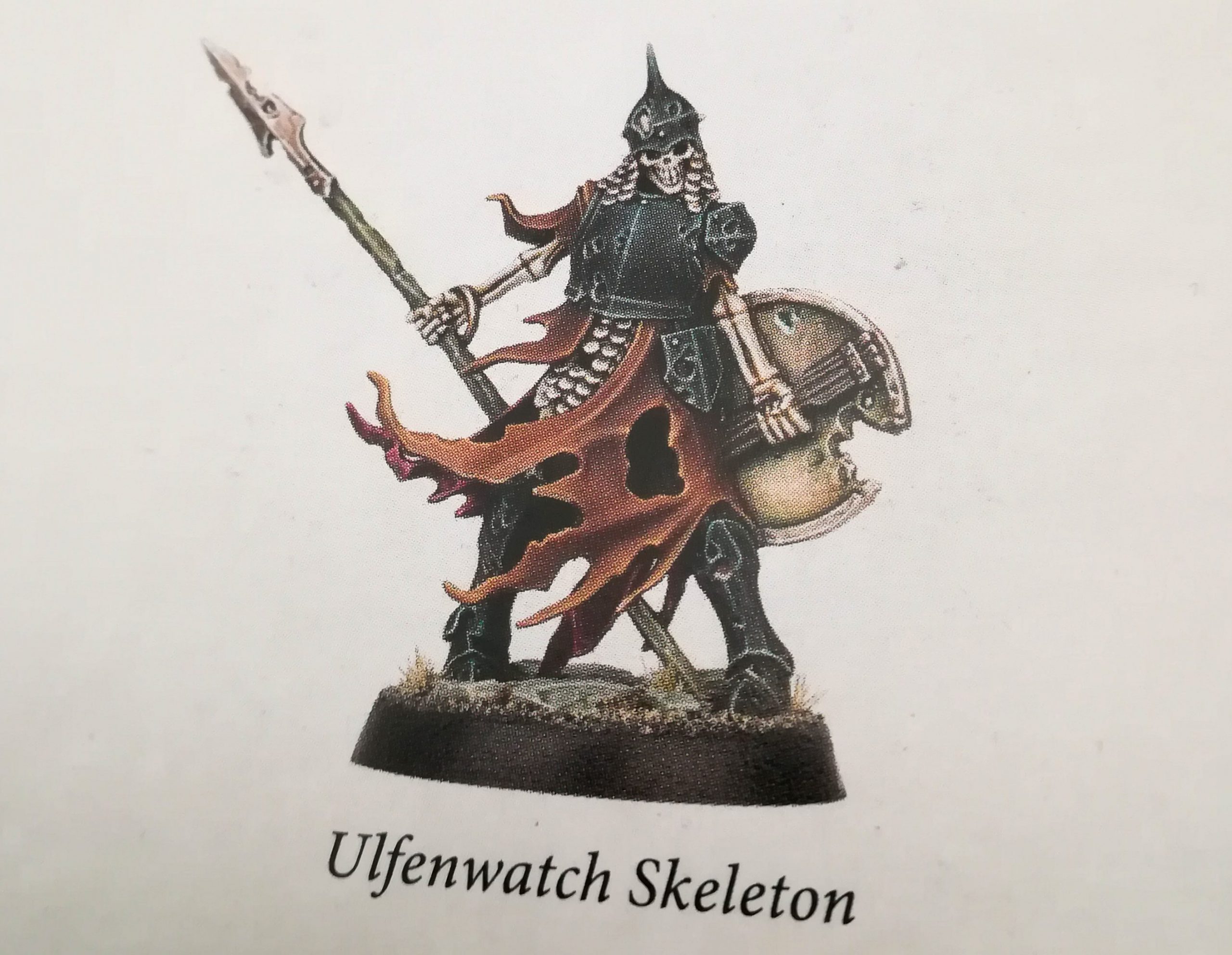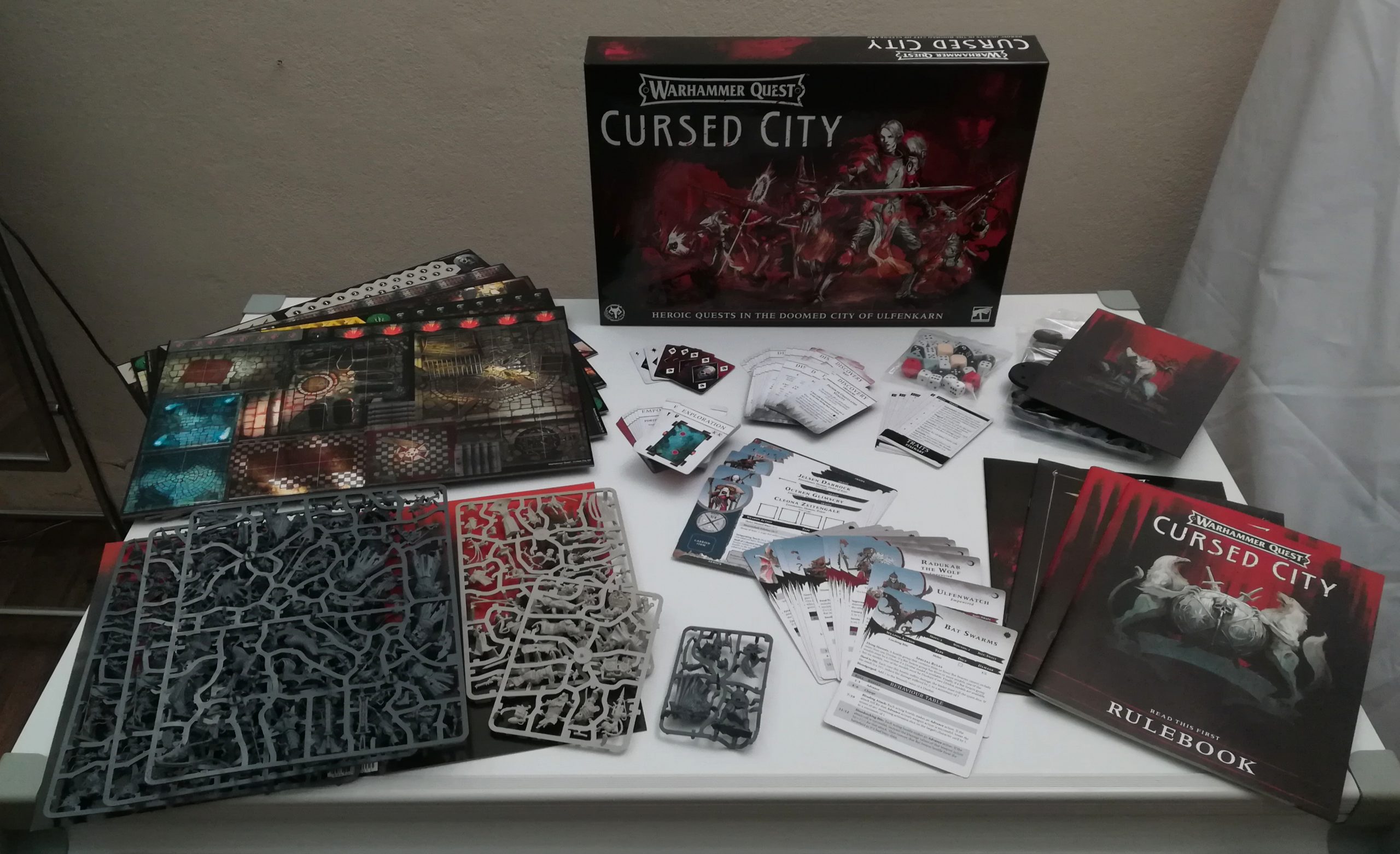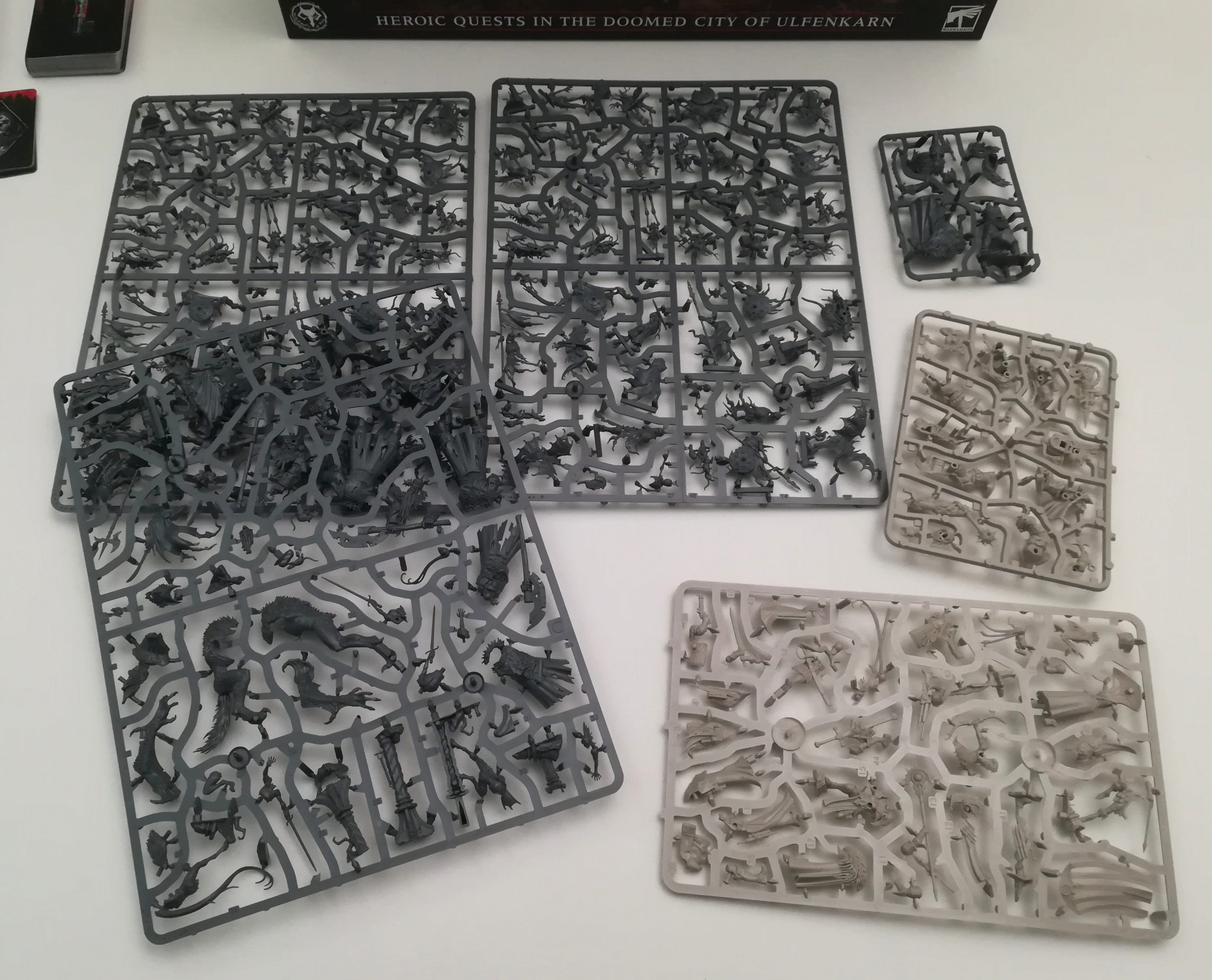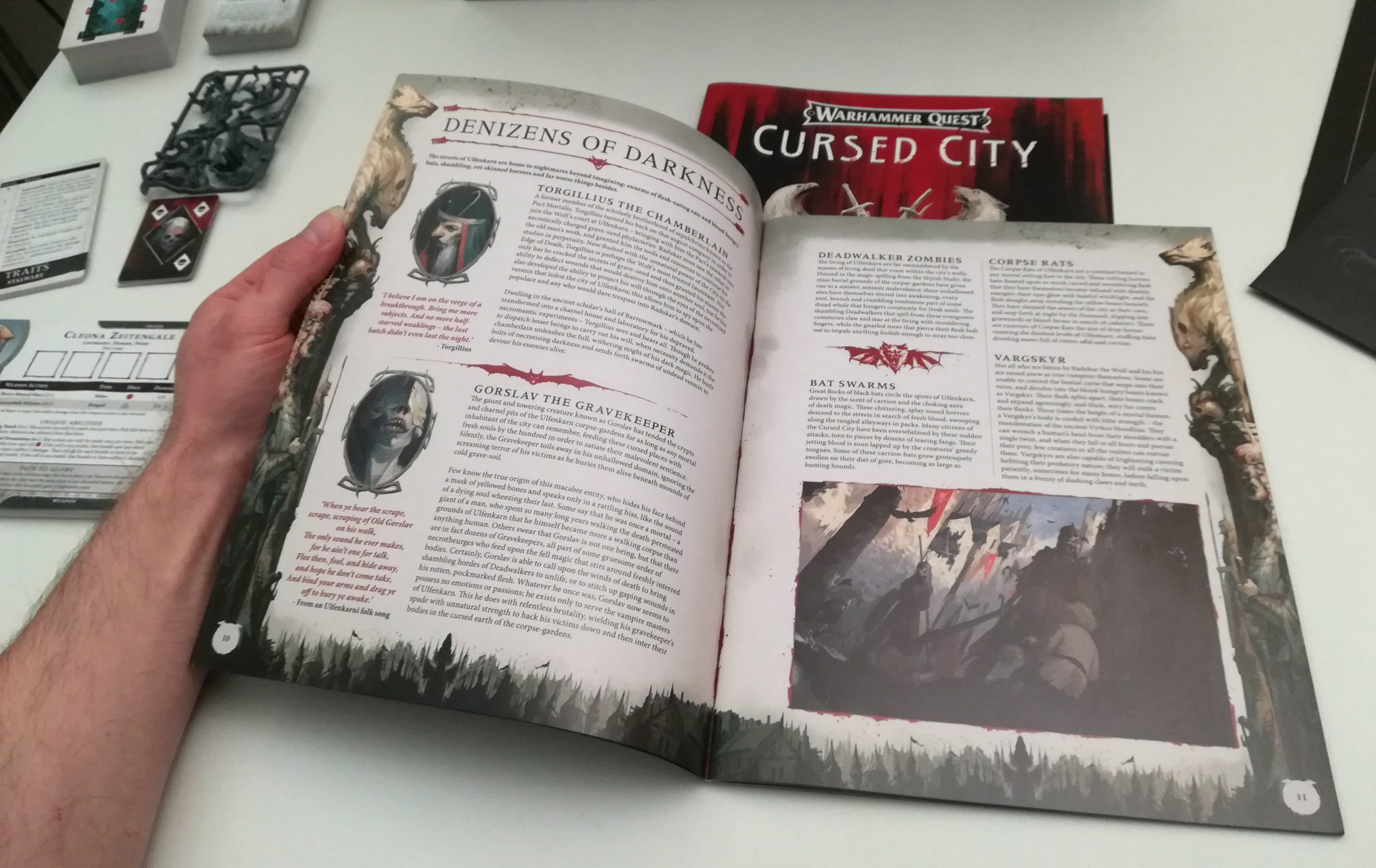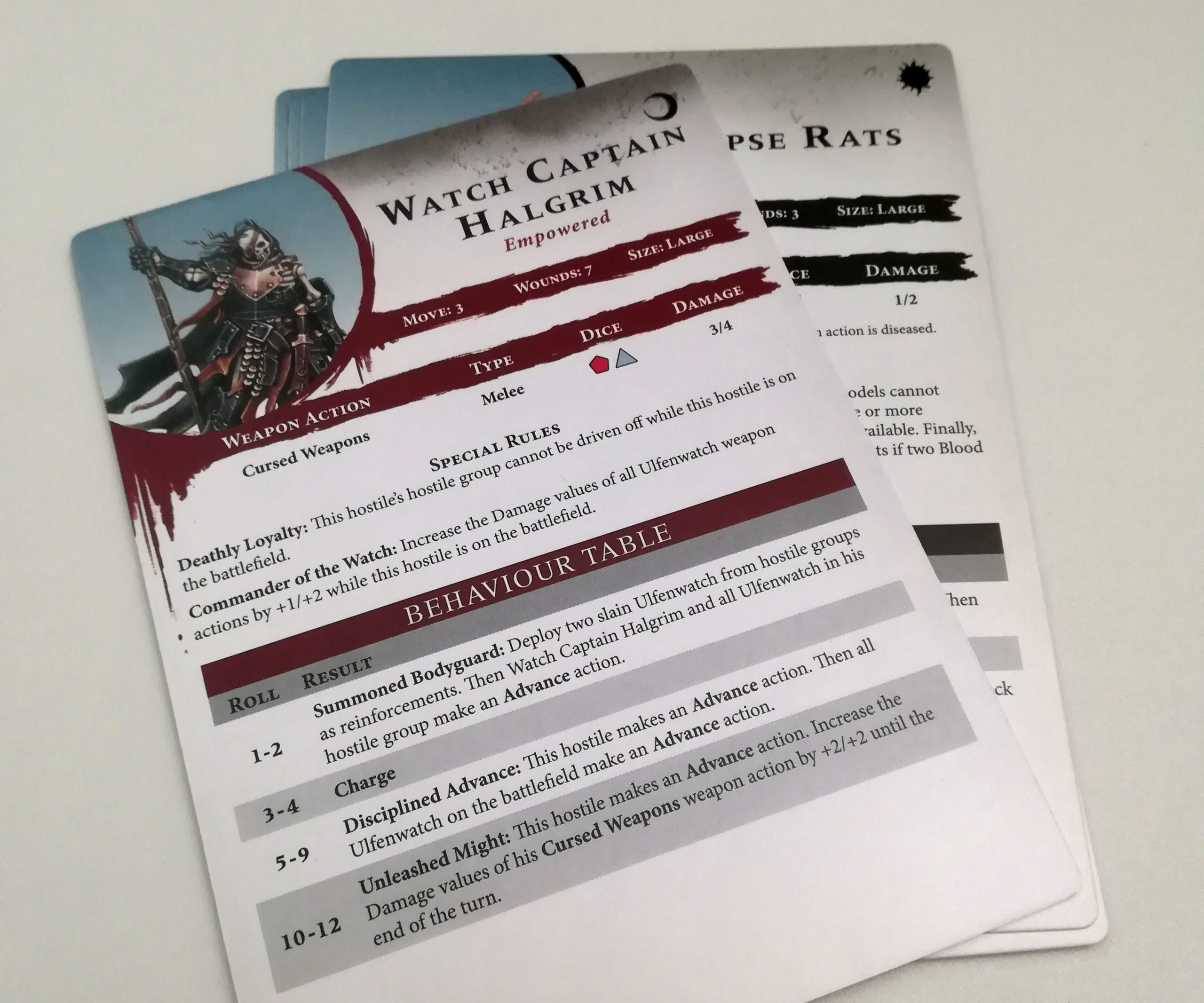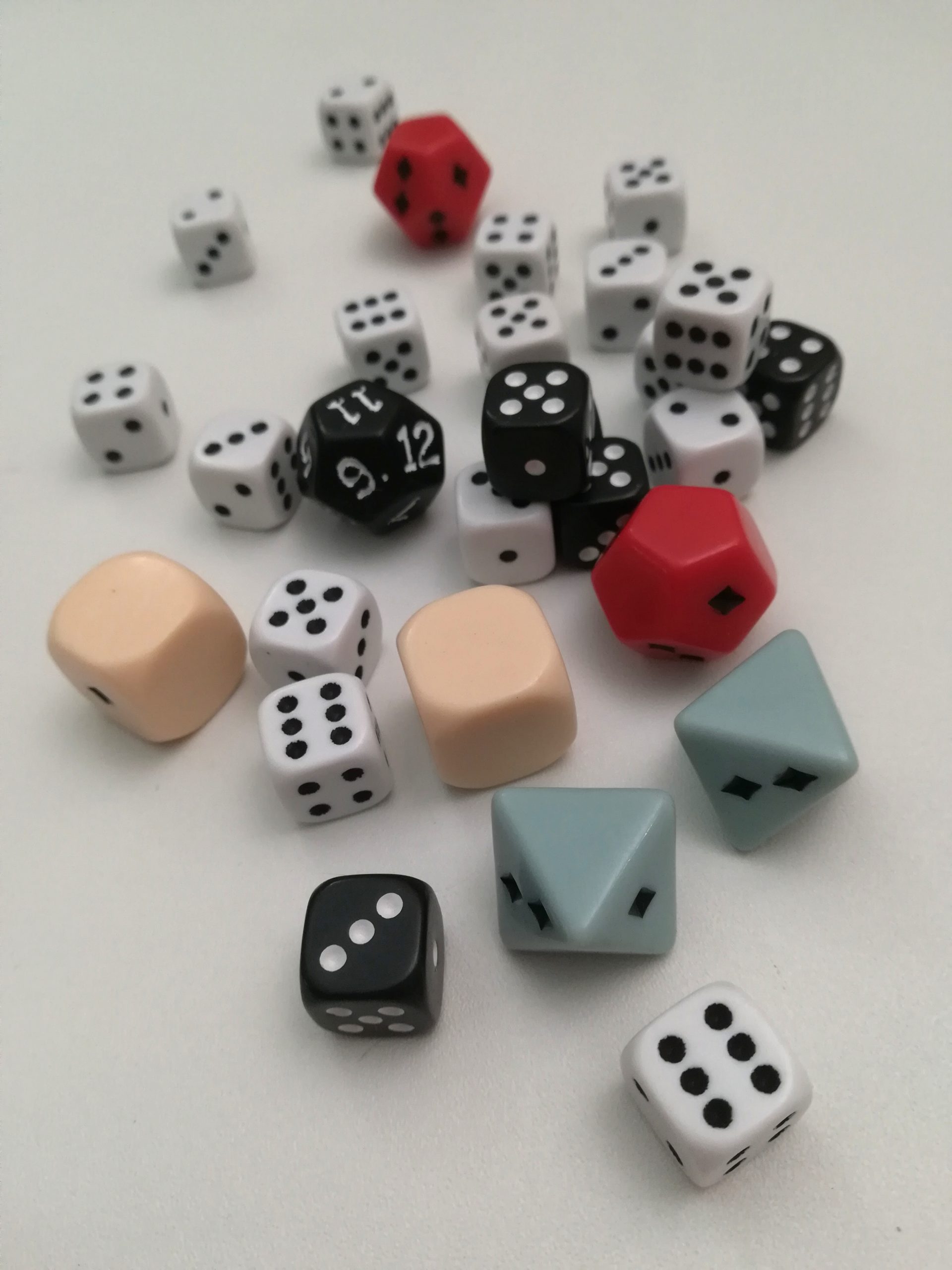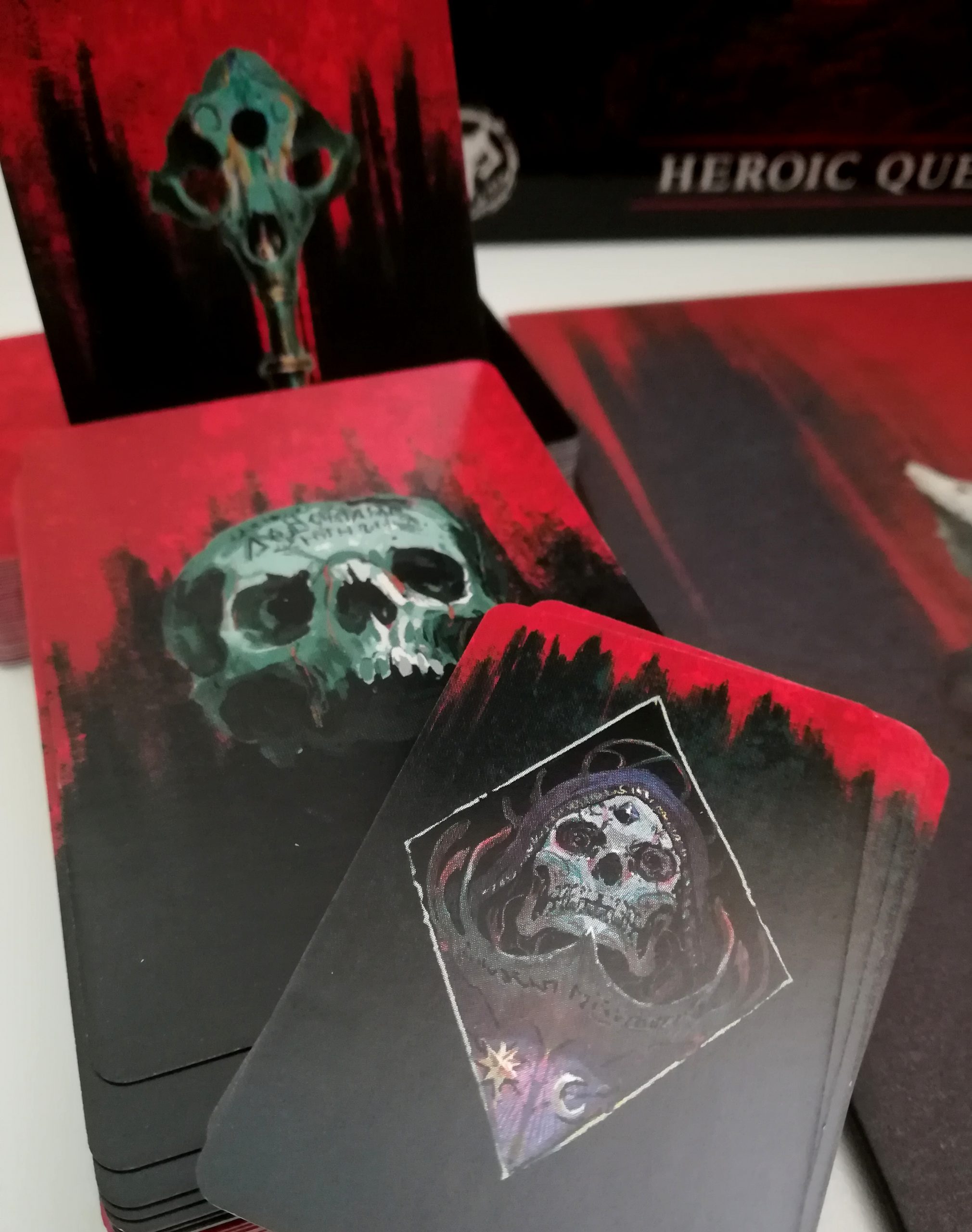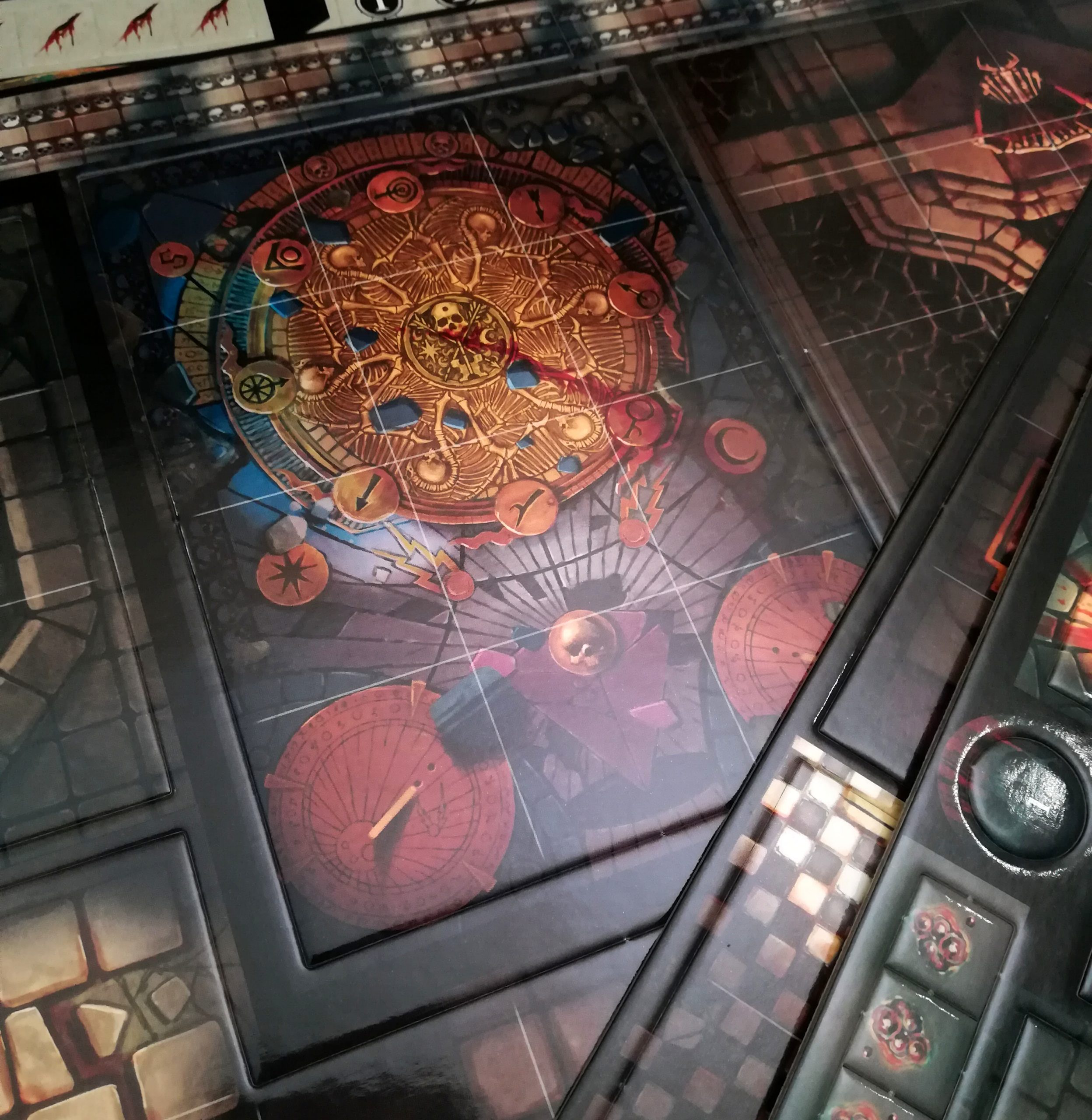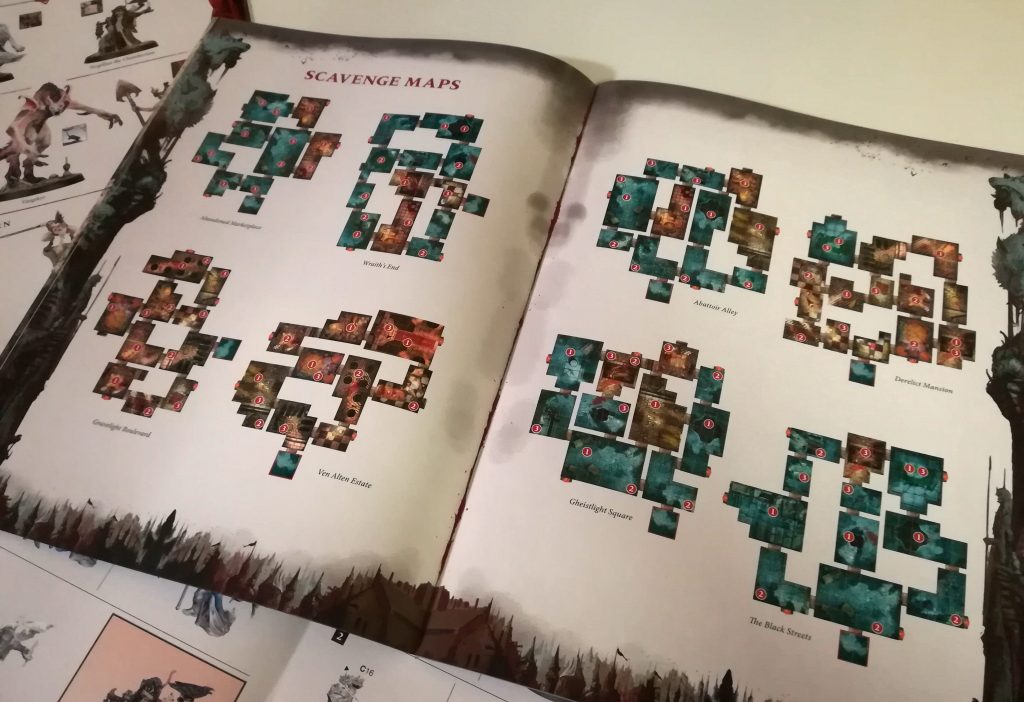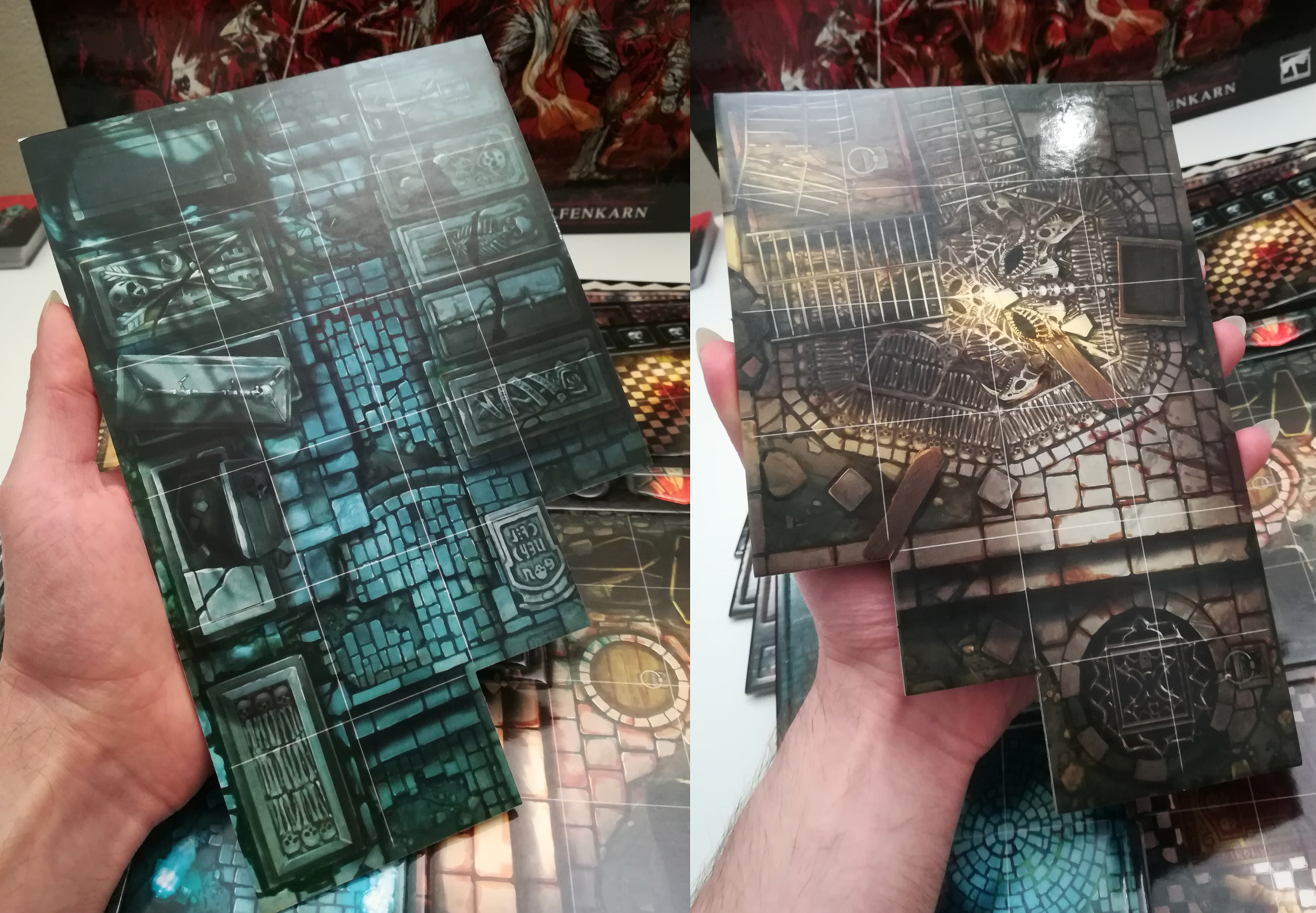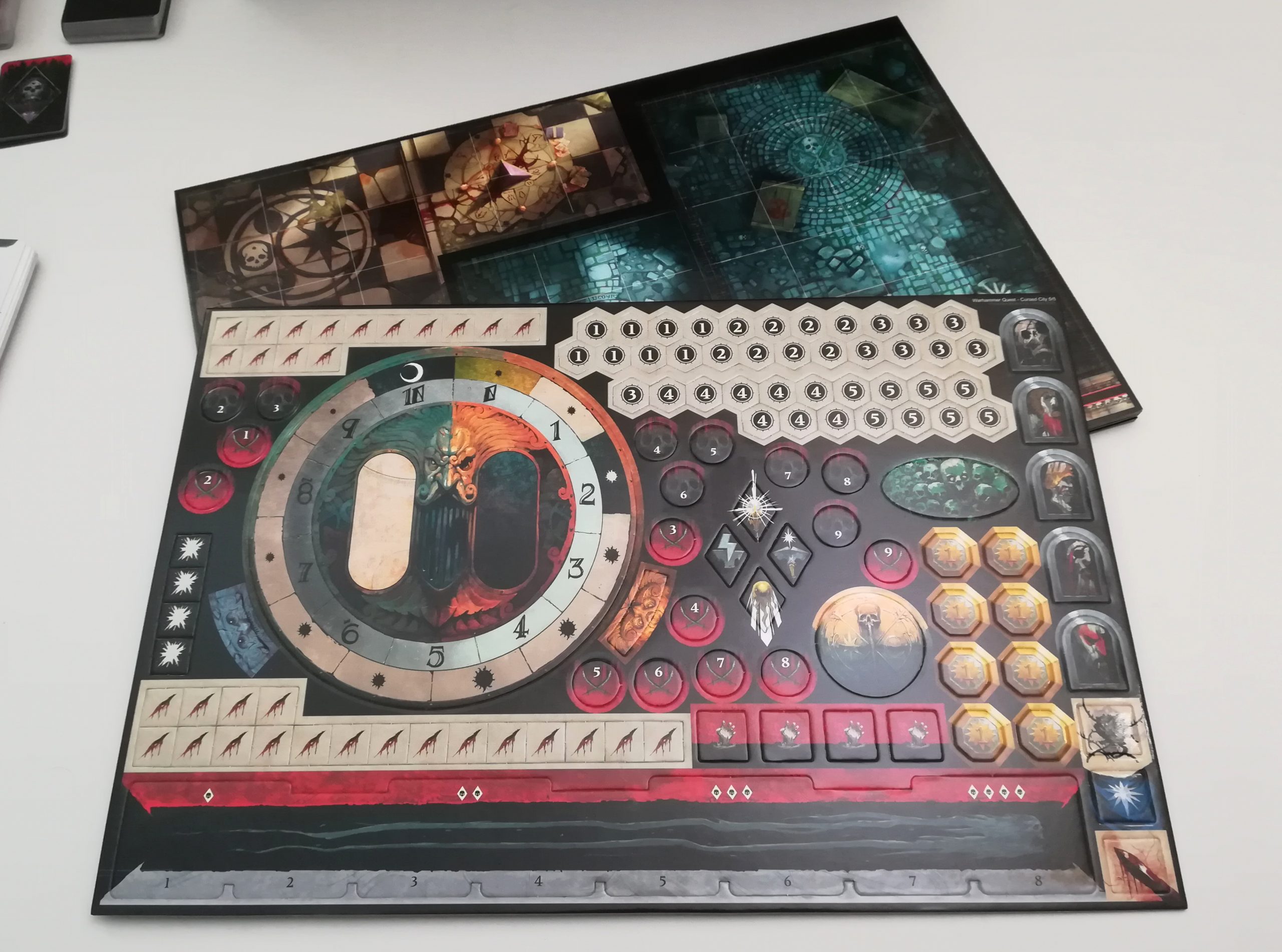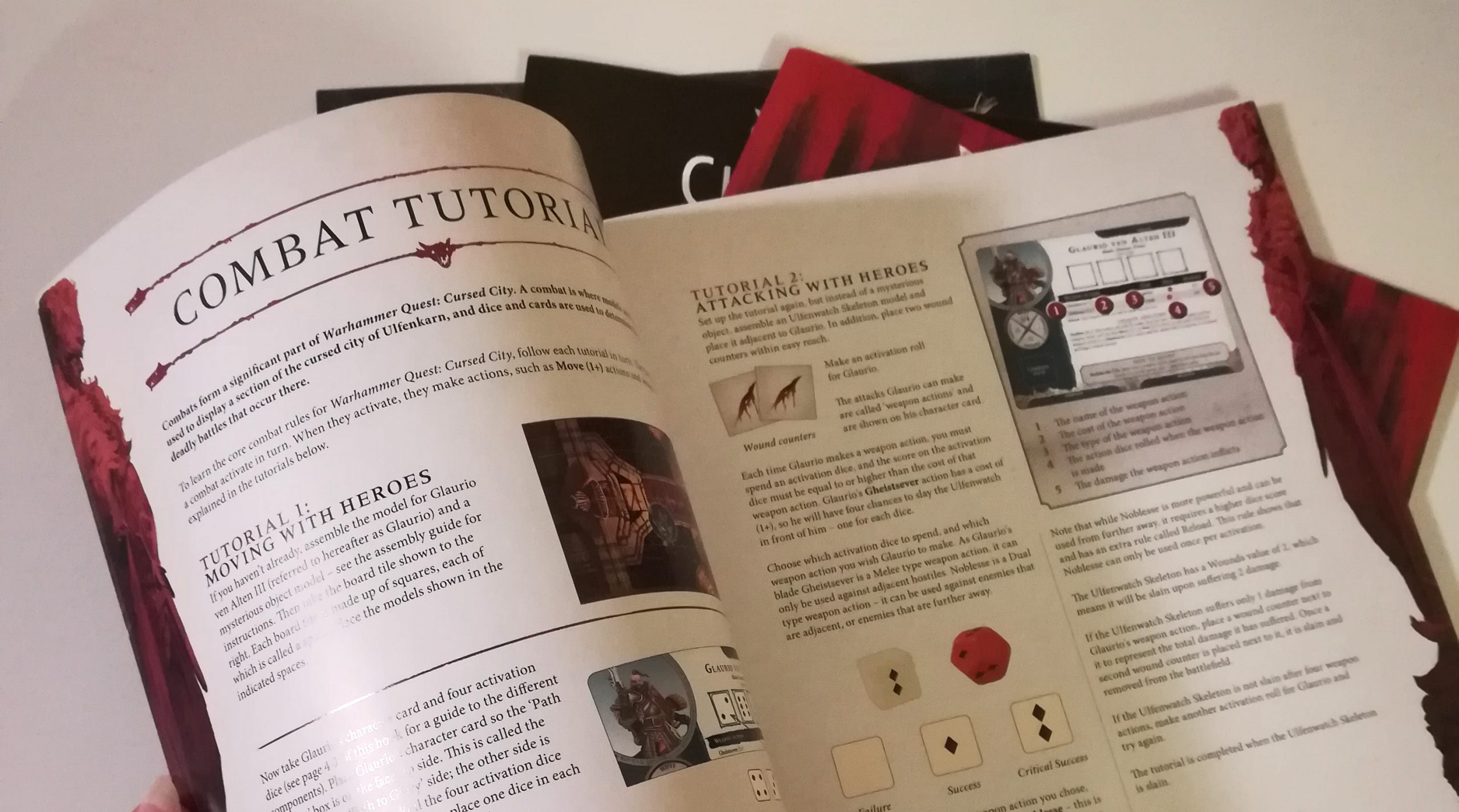Despite the title of this post possibly suggesting so, I’m not much of a nostalgic person. In fact, if this article were focused on the topic of nostalgia, it would very likely be critical and step on toes and be some sort of analytical downer. Maybe there will be a time for that, but not so now.
Now, there is a board game to be talked about. Amusingly, I’m also not much of a board game person, having no recollection of the last time I even played one.
Yet here I am, next to me the glossy cardboard box which has given me more giddy excitement than most other things in recent memory, along with an oddly comforting feeling.
Warhammer Quest: Cursed City. A board game.
Adorned with a striking illustration of stark contrasts, black and white, with only a single colour for midtones. Sanguine. Even without the text, you’d know things are looking grim. Our heroes surrounded, the undead closing in and with so much bloody red, there’s bound to be some Vampires around too.
Inside the box are all the ingredients to turn your table into a location of high adventure.
Around the box however, existed at a time (and still does to a degree), a whole lot of drama and disappointment. Met with immense interest at its announcement, the fact that Cursed City would initially be offered as a very limited run through pre-orders only, did not please. Even less so when those were quickly snapped up, followed by sudden news that for unspecified reasons there would be no further print-runs, making this first batch the only copies to exist. A dream for collectors and scalpers maybe, but a nightmare for anyone who just wanted to grab a copy to enjoy.
The likelihood of me acquiring a box was already slim, but that push into the far corners of a rare, overpriced luxury was definitely a reason to just forget about it entirely. So I did. Until the topic rose from its grave when talking to a friend and we discovered that not only had the game returned to print, but was also on deep sale at the time. They bought a copy right away and after some internal struggles and help from friends, I also had one on the way just in time for Christmas.
For me, any connected nostalgia would stem from a childhood birthday gift, which instantly became one of my biggest treasures. The original, classic Hero Quest. I would go so far as to call it one of my most formative items growing up. Even when I didn’t play the game with anyone else, I played with the game. Admired it.
For my friend, it was a little more complicated. They initially yearned for Hero Quest, but that was priced out of reach and so instead they got the more affordable sequel, Warhammer Quest.
At some point in life, both of us however lost our treasures. Warhammer Quest got damaged, Hero Quest lent to someone, never to return. Leaving each of us with a fantasy board game shaped hole in our hearts. So a new, modern release in the lineage of Quests was just the thing.
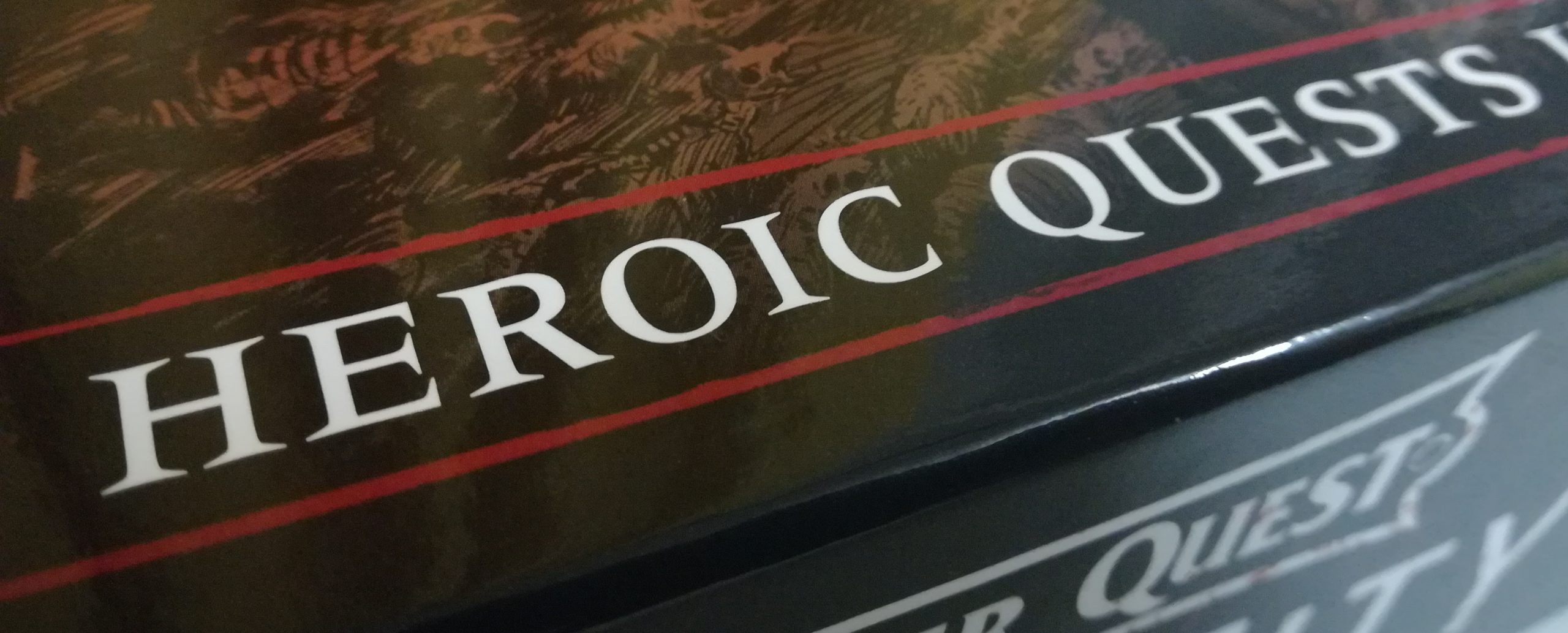
Conjuring memories and feelings of happy childhood moments might be a side effect for some, but it is easy to see the appeal and magic of board games apart from that. It’s all a very tactile affair. There’s dice to roll, cards to shuffle, draw and flip. Manuals to leaf through, tokens to stack and pieces to move across the board. In the case of these Quest games, it isn’t just any pieces either. Not simply coloured blocks or abstract figures, no. Here the player gets to push around diminutive representations of heroes and monsters. While the original Hero Quest’s figurines were already quite detailed, but still mostly single parts, almost all of Cursed City’s miniatures consist of multiple pieces, each of them downright intricate.
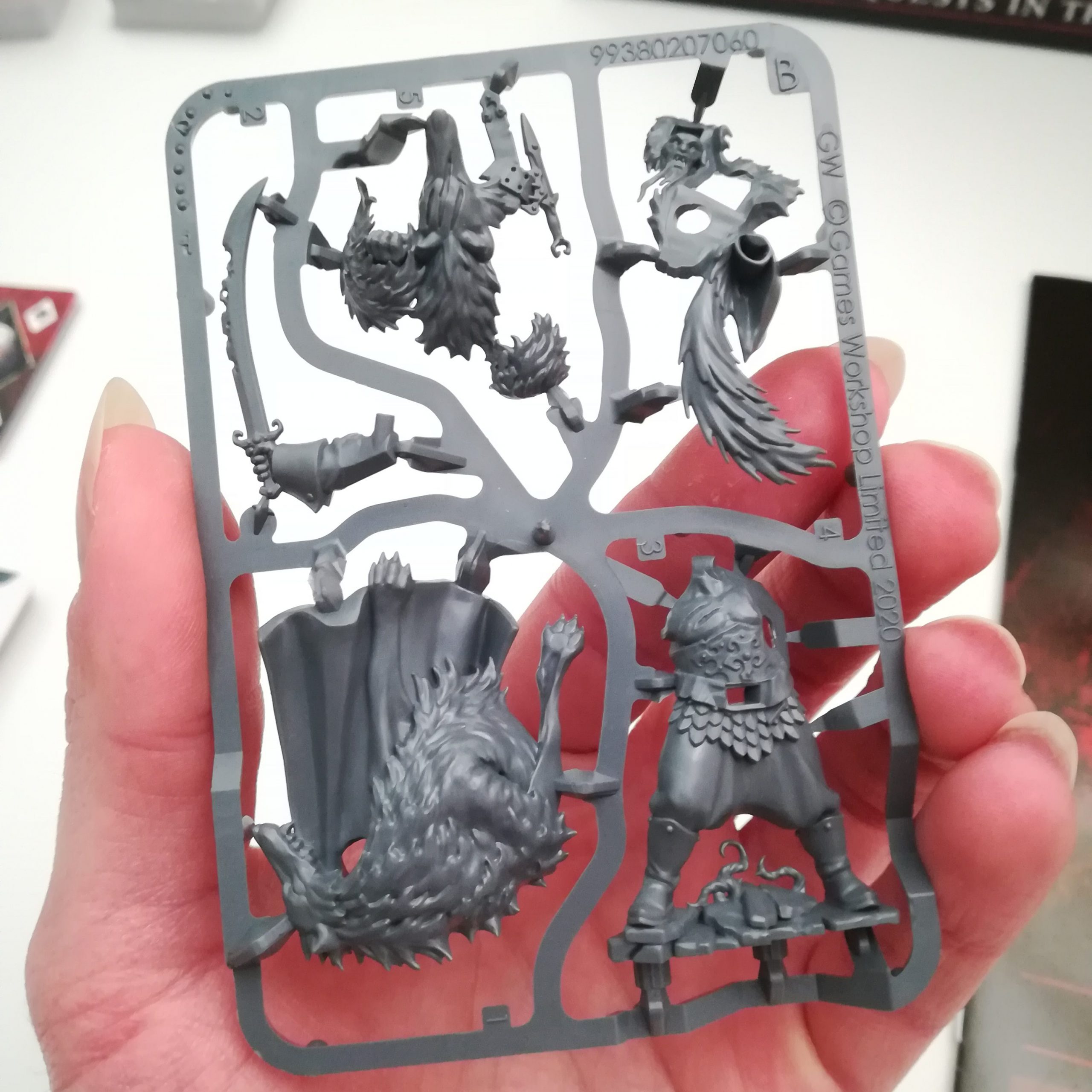

It’s no surprise that the small sculptures are the main attraction of this package as well as the British company behind it, Games Workshop. Founded in 1975, they’ve built an empire around them, complete with their own range of paints aimed at players who want their minis to look closer to the gorgeous, professionally coloured examples found throughout the rulebooks and marketing materials. I say players, but a big part of the customer base forgoes the gaming aspect of it altogether, their focus entirely on collecting and painting models chosen from a never ending stream of new releases.
With these releases, most miniatures come on their own, in small groups or themed bundles. Should you intend to play, the required rules and other supplementary books are separate purchases, terrain is up to yourself, as is figuring out which factions and units you like and which of them work together. At the core of Games Workshop are strategy wargames after all and those are a different beast compared to the neatly wrapped up adventure game that is Cursed City. Where the former demand research and choices, the latter is accessible and complete. A comforting collection.
Ironically while writing this article and doing some research, I learned that the two expansions released for Cursed City not only had a repeat of the limited availability and cancellation woes, but come without the needed miniatures, instead requiring you to buy those individually. So much for blissful simplicity, to say nothing of the affected affordability.
Thankfully this city has been very much afforded and nobody can steal the joy I’ve already received aplenty, despite having neither played the game, nor even put it together yet: Two things I originally planned to do shortly after Christmas, but then considered a live stream of the contents and assembly and as things go we’re now in March and that stream is still “probably happening”.
Something I have been doing repeatedly however and which spawned the blog post’s title, is taking the game off the shelf, unpacking it, admiring it and smelling it. Supposedly our noses are the biggest trigger of nostalgia and judging from my experience that seems quite true. For me there isn’t a need for too specific a fragrance, but a mixture of cardboard and ink like the one released out of the damned city will reliably recall positive feelings.
Aided no doubt by the realization that after all these years I have finally allowed myself to replace the champion of my past. While I knew the loss of Hero Quest and the circumstances around it were a sore spot, I don’t think I ever admitted to myself quite how tender it remained. Eyeballing various board games throughout the years, I always told myself the money to be better spent on something else and not like I have anyone to play it with anyway.
An issue the designers of this game circumvented by supplying behaviour tables for enemies, rather than relying on a Dungeon Master to make decisions about their actions. A simple roll of the dice and gone is the need for a second player, enabling solo adventures at whim.
No need for multiple persons, but definitely a need for multiple dice. Which were, I have to admit, a little bit of a disappointment compared to the rest. Not that I expected them to be made of wood like in the 90s, but the quality is lacklustre. Not terrible, but next to the beautiful satin sheen or deep gloss and crisp artwork printed on the manuals, cards and cardboard tiles, they feel somewhat out of place and more like a bag of cheap replacements. Maybe because plastic dice were the item I least expected to be sub-par coming from a company producing some of the finest quality pieces of plastic out there.
Another welcome difference appears in the area giving these games their descriptor. Where Hero Quest had a single, literal board with a fixed layout, Cursed City supplies separate rooms of various sizes and styles to be arranged freely next to another, offering much improved versatility. Coupled with more complex and hopefully interesting rules, it should make for a much deeper experience than Hero Quest used to be.
And for that to reveal itself, the game will need to be played. Which in turn means, I have to move past simply enjoying the possession of Cursed City and get it ready to open its gates to visitors. Snip off parts, assemble them into villains and heroes, snap out rooms, tokens and all the other gameplay helpers. Give the rule book another read, the tutorial a go.
My plan is still to do a live-stream, but even in case of that not happening, I will take you on a journey of transformation via this blog. Just like I turned Hero Quest into a game full of proudly painted minis as a boy, colour will come to this city full of monsters and their hunters. Except where I took my first steps into brushwork back then, I can now apply my full experience as a grown artist. Of one thing however I will make sure, having just as much fun.
Maybe this is where nostalgia is at its best. Not being wistful about things gone by or lost, trying to get them back the way they were, but remembering why they gave us joy and finding or creating a modern version of those childhood treasures. A sequel with the same heart, but the spirit of our times.
Oh and should I ever give this new treasure away? I’ll make sure that time it will be as a gift and without regrets.
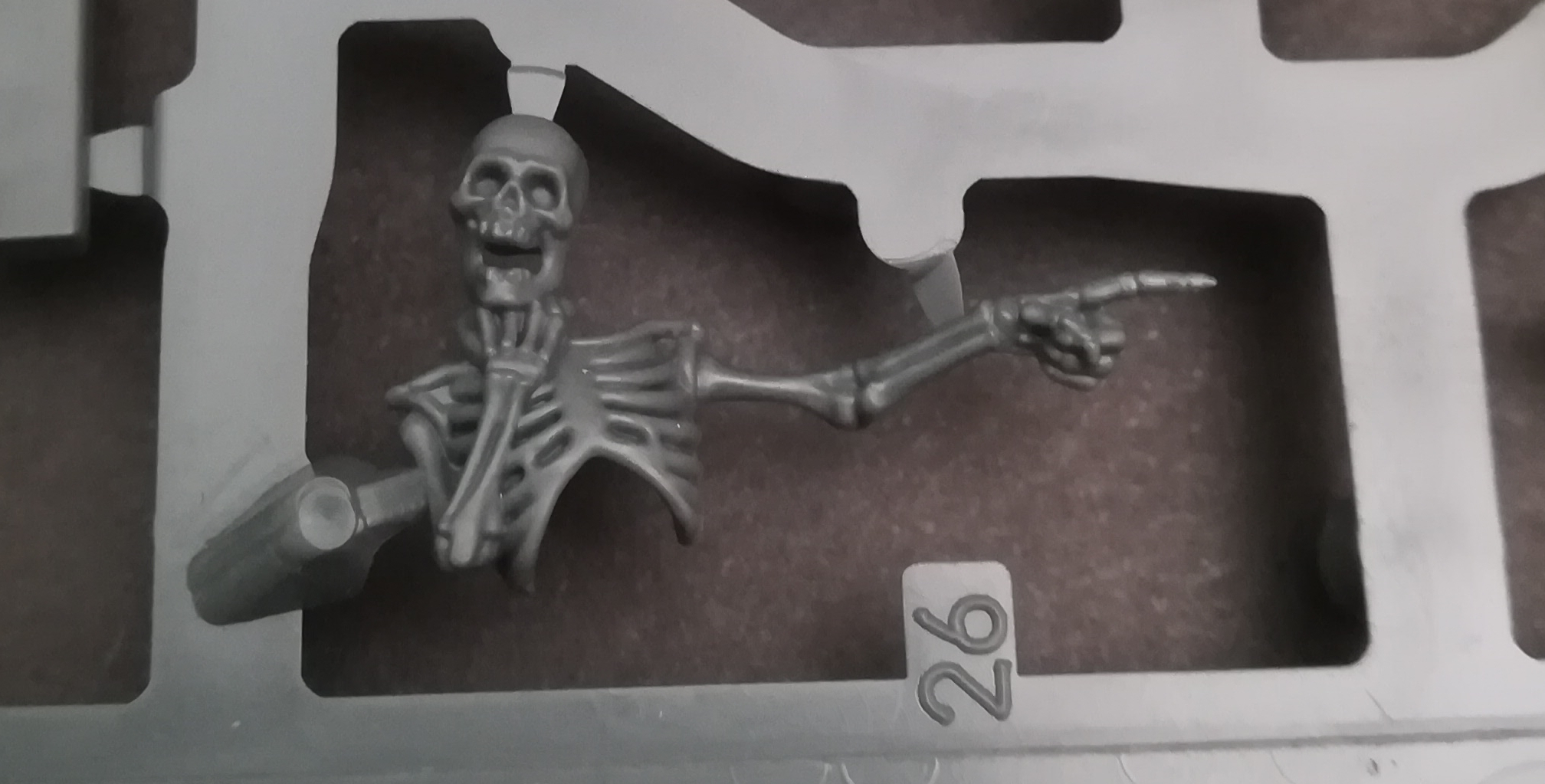
If you enjoyed this article and would like me to write more of its kind, you can support and allow me to do just that over on ko-fi via that fancy floating “support me” button on the left.
Thank you,
Horst-Peter
